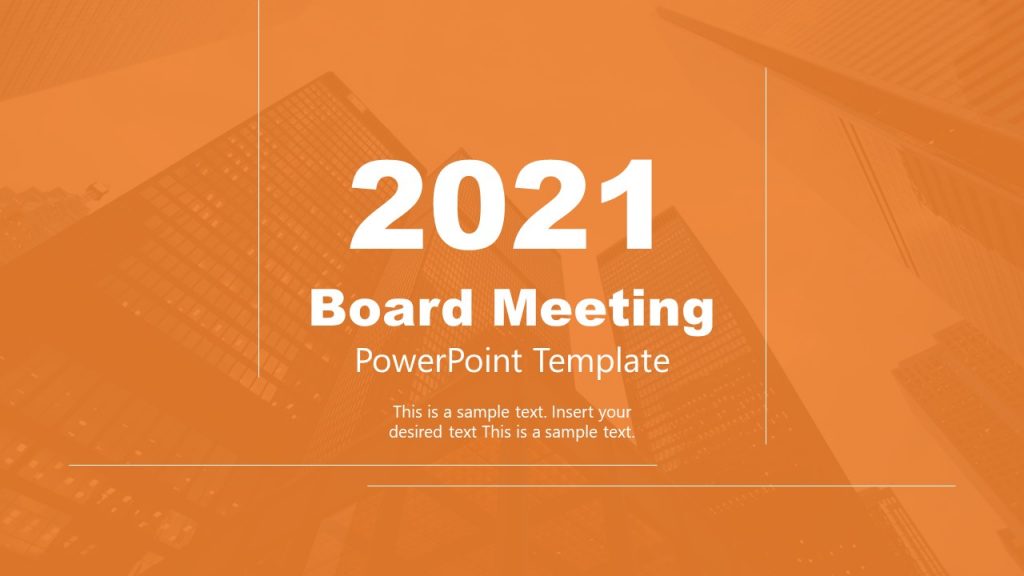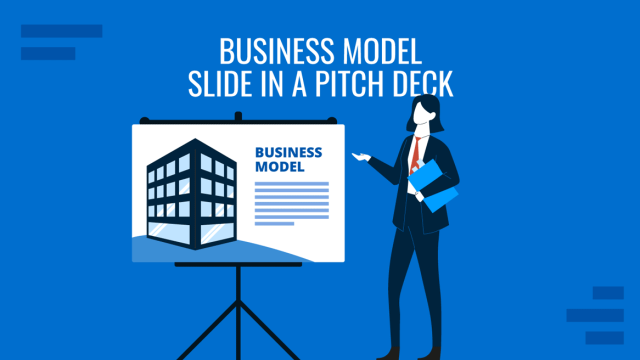
Board meetings are formal gatherings of a company’s board of directors, designed to discuss and make decisions about the organization’s strategic direction, financial performance, and governance. These meetings allow directors to communicate their vision with fellow stakeholders, are regulated by the organization’s bylaws, and often follow a pre-established format that defines timing, communication style, and recordings. So, to preserve that neat efficiency level, a powerful visual communication tool must be used to convey ideas into an actionable slide deck. Meet the board presentation deck.
These presentations often set the tone for high-level decision-making during BoD meetings, addressing critical issues such as financial performance, market positioning, and long-term strategy. Unlike other business presentations, a board presentation is distinguished by its focus on concise, impactful data delivery and its ability to prompt actionable discussions.
This article serves as a guide to crafting and delivering an impactful board of directors presentation. By understanding the key elements to include, how to present decisions, and the common pitfalls to avoid, you can elevate your presentations to meet your board’s expectations. Whether preparing for a quarterly review or pitching a new strategic initiative, mastering these skills will enhance your credibility and significantly impact the organization’s trajectory.
Table of Contents
- What is a Board Presentation?
- Topics to Cover in a Board Presentation
- How to Craft Content for a Board Presentation
- How to Present Decisions in a Board Presentation
- Common Mistakes in Board Presentations
- FAQs
- Recommended Board Presentation PPT Templates
- Final Words
What is a Board Presentation?
We refer to a board presentation as a formal communication event prepared for the board of directors to review and evaluate key aspects of an organization’s operations, strategy, and performance. Unlike everyday operational updates, a board presentation focuses on the broader picture, emphasizing data-driven insights and long-term implications behind decisions.
The content of a board of directors presentation varies based on the meeting’s purpose. Still, it often includes financial updates, progress on strategic goals, a business plan presentation, market analysis, and an outline of risks and opportunities. For instance, a sample presentation to the board of directors might begin with an executive summary highlighting recent financial trends, followed by a deep dive into market dynamics, and conclude with recommendations for the board’s consideration. The emphasis is always on providing clear, actionable information that enables board members to make informed decisions.
Board presentations also serve as a record of accountability and strategic direction. Providing a structured overview of an organization’s performance and challenges, they help board members assess whether the company is on track to meet its objectives.
Topics to Cover in a Board Presentation
A successful board presentation addresses topics that align with the board’s strategic concerns, ensuring the discussion remains focused and productive. The core topics typically covered include financial performance, strategic initiatives, market and industry trends, and risk management. These elements form the foundation of a comprehensive discussion during BoD meetings and provide the board with the information needed to make high-stakes decisions.
Financial performance is often at the heart of a board presentation. This specific angle should concisely overview recent results, deviations from forecasts, and future projections. Visual communication tools, like dashboards, can make complex concepts easier for board members from any background to understand. Take a look at our selection of dashboard PowerPoint templates to find fine examples of tools to visualize data.
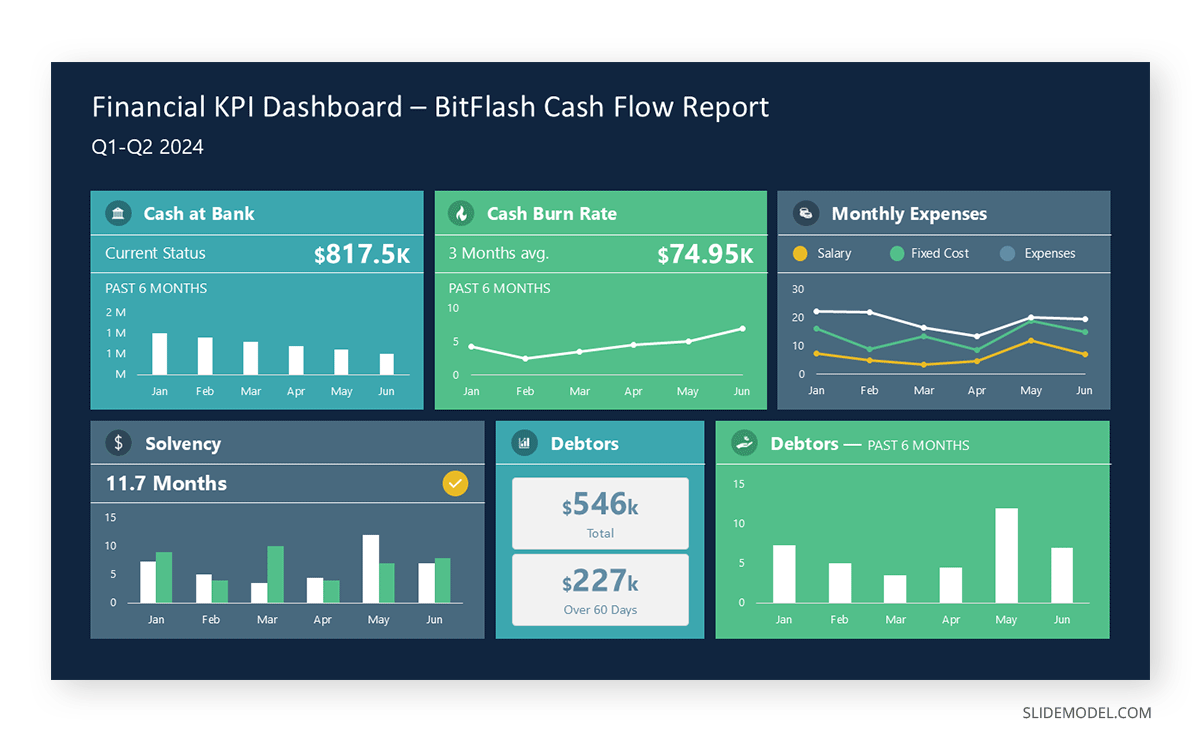
Strategic initiatives are another critical component of this meeting type, as they demonstrate how the organization is working toward long-term goals. Updates on milestones achieved, obstacles encountered, and next steps help to foster transparency and accountability across all levels of the organization.
Market analysis and competitive positioning set the context for the organization’s performance. In board slides, presenters typically address external factors such as market dynamics, regulatory changes, or competitors actions so the board can assess the current standing and potential challenges the organization is about to face.
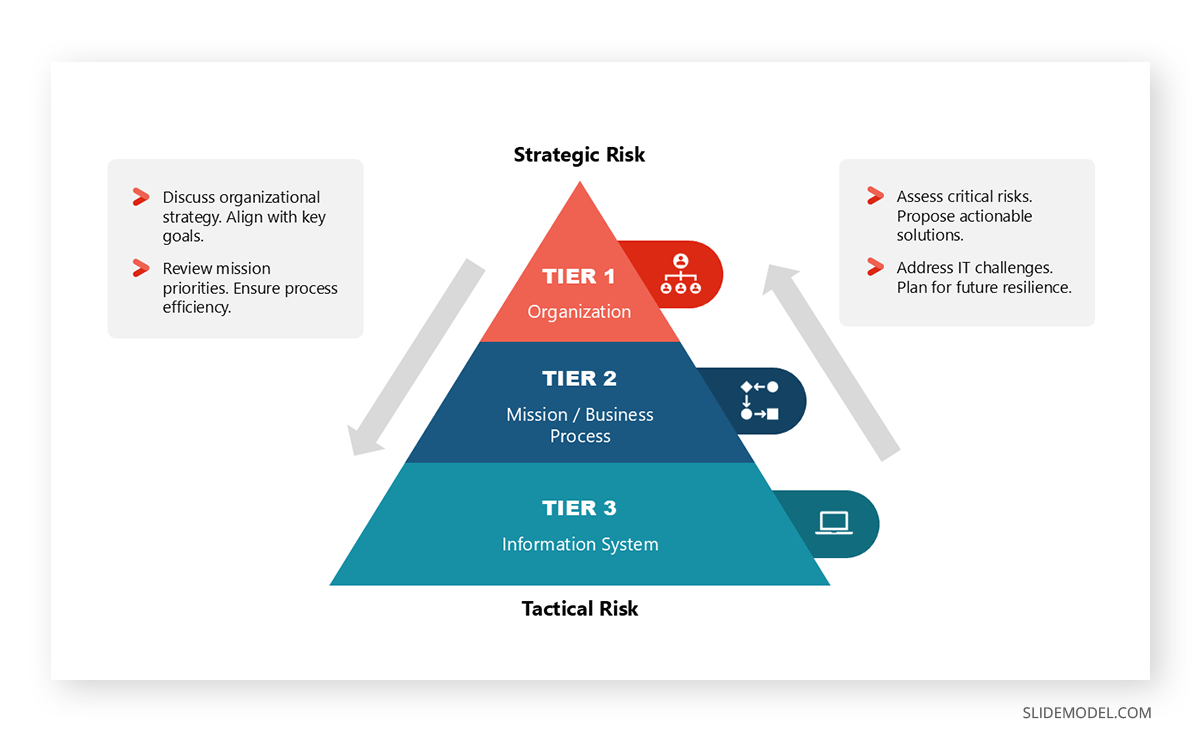
Finally, risk management presentations are a critical topic inside board presentations. A robust analysis in this area is a sign of preparedness and instills confidence in the board, especially when changes happen faster than analysts can expect.
How to Craft Content for a Board Presentation
Crafting content for a board presentation requires a strategic approach that balances depth with clarity. The goal is to deliver a compelling narrative that addresses the board’s priorities while maintaining focus and brevity. Starting with an executive summary is essential. This opening provides a high-level presentation overview, outlining key topics and decisions to discuss. It sets the stage for the rest of the board slides and ensures the audience knows what to expect. You can also pick other methods when defining how to start a presentation – it’s all context-related, so be flexible enough to adapt your communication style to the requirements of your BoD meeting.
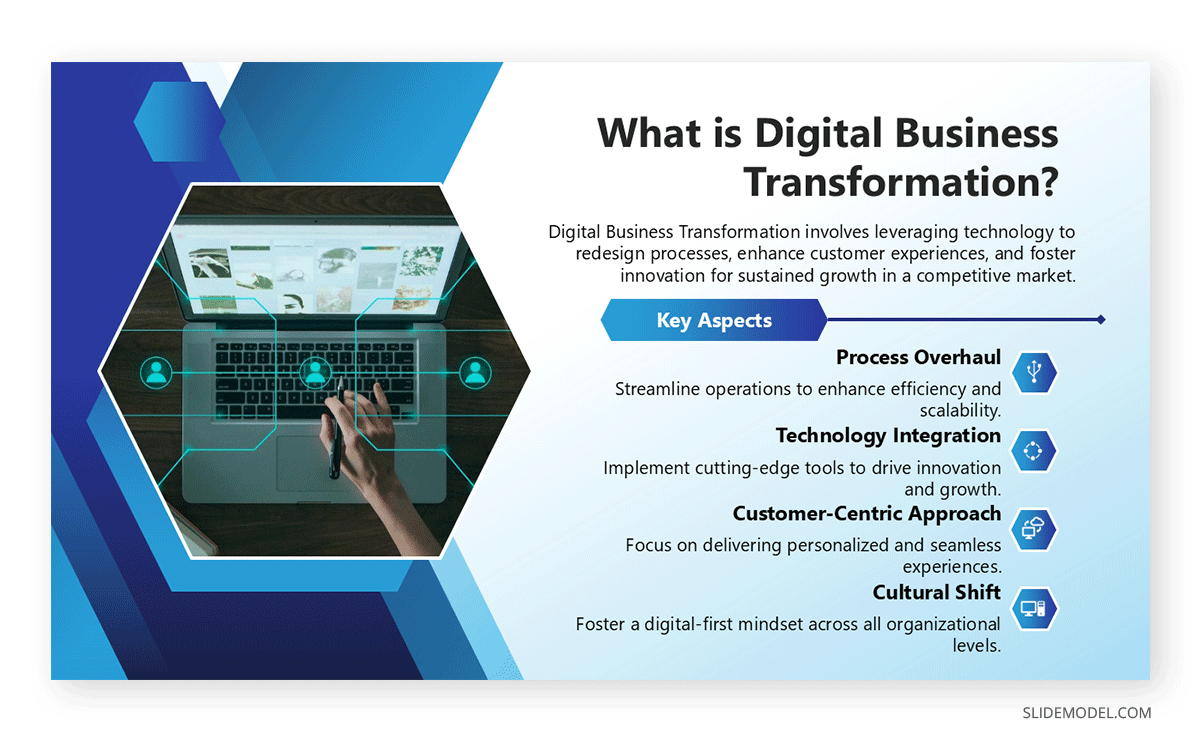
The main body of the presentation should flow logically, with each section building on the previous one. Data presentation strategies are key, as information should be presented to highlight trends, comparisons, and actionable insights. Using visual elements such as charts and graphs can make complex information more accessible and engaging. A sample presentation to the board of directors often includes a mix of qualitative insights and quantitative analysis to paint a complete picture of the issue at hand.
Each slide should serve a clear purpose: to inform, persuade, or prompt a decision. Supporting materials, such as detailed appendices or financial statements, can provide additional depth for those who want to explore further without overwhelming the primary presentation. Remember that board members often come from diverse backgrounds, so it’s critical to avoid jargon and go straight to the point.
Using PowerPoint templates effectively is essential for crafting professional board slides that convey key data and insights. Incorporating techniques like storytelling through visuals can elevate your presentation. For a creative approach, consider learning how to make a vision board in PowerPoint to visually map out strategic initiatives or organizational goals.
How to Present Decisions in a Board Presentation
Presenting a series of elements to decide involves more than making a recommendation. It requires framing the decision within well-supported contextual data that encourages the board to consider the suggestion.
Start by clearly defining the problem or opportunity that necessitates the decision. Context is key, as it helps the board understand why the issue is significant. For example, a sample presentation to the board of directors addressing a new product launch might outline how market demand, competitor activity, or internal innovation has led to the proposed course of action. Using data-driven insights—such as financial projections, market analysis, or risk assessments—provides a solid foundation for your argument. Visuals like graphs, charts, or comparative tables can help distill complex information into actionable insights, ensuring the board slides remain impactful.
Next, the proposed decision and any viable alternatives are presented. Clearly articulate the recommended course of action, explaining why it aligns with the organization’s strategic goals. Acknowledge risks and potential downsides to demonstrate a balanced analysis. For instance, a board of directors presentation exploring an expansion strategy might weigh the benefits of entering a new market against the costs and logistical challenges involved.
Finally, encourage engagement by inviting questions and facilitating discussion. Board members are more likely to support a decision if they feel their input has been considered. Demonstrating openness to feedback signals confidence and fosters collaboration. Drawing from board of directors presentation examples can provide valuable insights into how successful presentations incorporate data, storytelling, and engagement techniques to achieve consensus on critical decisions.
Common Mistakes in Board Presentations
One of the most frequent mistakes in board presentations is overloading slides with information. While it may seem prudent to include as much detail as possible, rather than creating an engaging presentation, you’re overwhelming the audience and distracting them from key information. To prevent this from happening, we recommend you check our article on bad slides, as they summarize the most common layout mistakes made by presenters.
Another common error is using jargon or overly technical language. Not every board member shares the same technical background as the organization’s employees, so clear, straightforward message ensures the message is accessible to all members.
A strong board presentation should always end with a clear, actionable request or recommendation. Presenters who fail to specify what they need from the board—be it approval, guidance, or feedback—leave members unclear about their role in the decision-making process. Always end a presentation with a well-defined CTA, summarizing the key decision points and explaining the next steps required from the board to move forward. This ensures alignment and avoids ambiguity. Our guide on call to action slides can help you master the best practices.
FAQs
Why are board presentations important?
Board presentations are essential for keeping the board informed, ensuring transparency, and driving strategic decisions. They provide a structured platform to present critical updates and seek initiative approval, making them vital to organizational governance.
How do board presentations differ from other business presentations?
Board presentations focus on high-level insights and strategic decisions rather than operational details. They are concise, data-driven, and tailored to the board’s priorities, often featuring well-structured board slides to enhance clarity and impact.
What are the key components of a board presentation?
Key components include an executive summary, financial performance updates, strategic initiative progress, market analysis, risk assessments, and recommendations requiring board input. Each section should be concise and well-supported by data.
How long should a board presentation be?
Depending on the agenda, a board presentation should typically last 15–30 minutes. This allows sufficient time for questions and discussions during BoD meetings.
How do I present financial data effectively in a board presentation?
Use charts and graphs to illustrate trends, comparisons, and forecasts. Highlight key figures and deviations from expectations while clearly explaining the data.
Recommended Board Presentation PPT Templates
In this section, we’ll list our selection of board PowerPoint templates to create powerful presentations in just minutes. All designs are also meant to be used as Google Slides templates.
Final Words
A board presentation is more than a routine update; it is a strategic opportunity to influence an organization’s future. By understanding the board’s priorities, crafting focused and data-driven content, and presenting decisions with clarity and confidence, you can transform your board slides into a powerful tool for achieving alignment and progress.
Effective board presentations are not just about delivering information—they are about telling a story that resonates with the board of directors. Whether presenting financial updates, outlining strategic initiatives, or seeking approval for a new direction, each presentation element should contribute to a cohesive narrative supporting the organization’s goals. Reviewing board of directors presentation examples can provide valuable insights into how top-performing organizations structure and deliver their messages.


